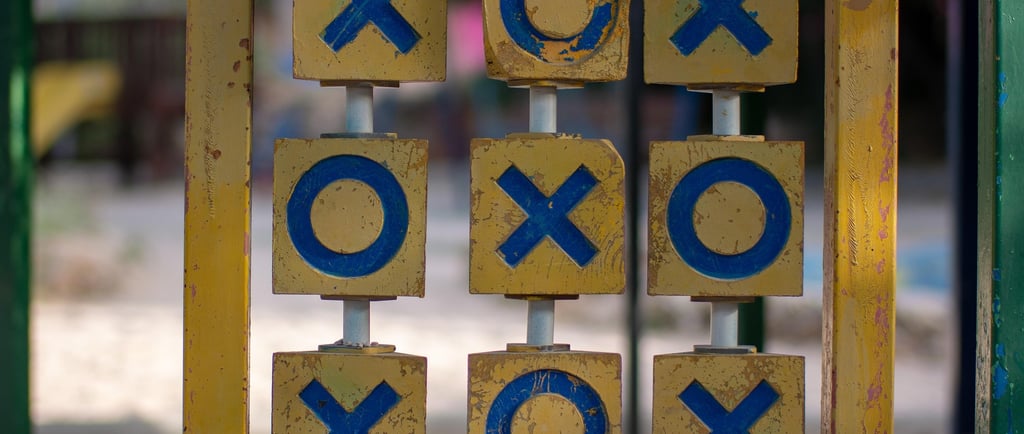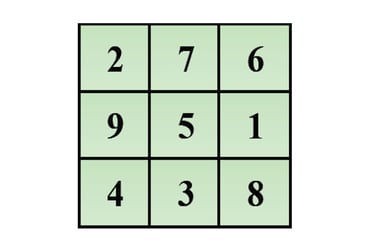✨ The Magic of the Square 🔲 A Story of Patterns, Play, and Possibility 🔢
🔲 A follow-up story branching from the Chapter Math Stories in the Math Album ✨🧠 This chapter opens the door to explore mathematics through stories, showing that math is not just word problems and equations—it’s patterns, imagination and connection. 📚✨ The story invites children to explore the Magic Square—a puzzle of perfect balance where numbers quietly align in all directions, revealing a harmony once seen as mystical. 🧮🌍 With this story, we invite children not only to uncover the hidden relationships between numbers, but to play—to test combinations, look for patterns, and even invent their own Magic Squares. 🎲💫 What begins as a tale of ancient wisdom becomes a joyful, living game of discovery. 🧠🌟
MATH STORIES
4/3/20253 min read


🎲 Have you ever played a game and thought: “I could make a better version of this!” What if you could invent a game using just numbers? Thousands of years ago, long before calculators and computers, people began to notice something amazing about numbers. They didn’t just count with them. They played with them. They arranged them in shapes. They looked for beautiful patterns hiding inside them.
One day, someone—maybe a curious thinker—had an idea: “What if I arrange numbers in a grid of squares… and try to make all the rows, columns, and even diagonals add up to the same number?” 🤔
It was a strange idea. A tricky one. But people love challenges. And soon, someone did it. And when it worked, it felt like… magic. In a magic square, the numbers are placed just right, so that every row, every column, and both diagonals all add up to the same number. 😮
It doesn’t matter if you go across, down, or diagonally—each path adds up to the same magic number!A very famous Magic Square is using the numbers 1 to 9:
Let’s check if it's true and add the numbers : ( invite the children to explore all the possible combinations on the grid )
2 + 7 + 6 = 15
9 + 5 + 1 = 15
4 + 3 + 8 = 15
…and the columns? Also 15! The diagonals? Still 15! ✨Like a Magic!✨
Over 4000 yeard ago in ancient China, people told a story about a great flood. The rivers had overflowed, and the people were worried. One day, a turtle 🐢 rose from the Luo River, carrying something mysterious on its shell—a pattern made of numbers!
The people looked closely and realized something magical: the numbers on the turtle’s shell formed a square, and every row, every column, and every diagonal added up to 15! ✨ The people were amazed! They believed this was a message from the universe, like the turtle was saying: “There’s a secret pattern hiding in numbers.” 🔮✨. ☯️ They called it the Lo Shu Square, and they began drawing it in special places—on walls, stones, and temples—as a way to remember the balance it showed.🏯🔲
In ancient Indian traditions, magic squares were connected to art, spirituality, and geometry. People created magic squares called yantras. They drew them with bright colors, geometric shapes, and beautiful patterns—like mandalas 🎨🔺🔵. Some people believed these squares helped them think clearly, stay calm, or even feel lucky.
In Europe, hundreds of years later, the magic square became a favorite among deep thinkers and artists. 🎩🎨 One of the most famous was a German artist who loved exploring the connection between art and math. 🎨🔢 In the year 1514, he made a mysterious artwork called Melancholia I. Hidden in the picture was a magic square but in a grid of 4—and if you look closely at the bottom row, you’ll see the numbers 1514… the year he finished it, tucked right into the math! 🕵️♀️🧮
I wonder what is the magic number of we add the numbers : ( invite the children to explore all the possible combinations on the grid )
16 + 3 + 2 + 13 = 34
5 + 10 + 11 + 8 = 34
...
As time passed, people started playing with these number squares in different ways.
Does this grid remind you of a game where two players take turns trying to get three in a row? Yes, Tic-Tac-Toe! ❌⭕✨
People have been playing this game on a grid for thousands of years! ✅ The earliest known version of this game dates back to ancient Rome, over 2,000 years ago! People carved 3×3 grids into stone and used pebbles or small tokens to play. This game was called Terni Lapilli, which means three little stones. 🏛️🪨
Over time, people replaced the numbers and the stones with symbols like ❌ and ⭕. But the grid stayed the same, and so did the challenge: Think ahead. Make a plan. Spot the pattern.
I wonder.. if you can make your own magic square. 🔢 🔍 Maybe you can discover another kind of pattern hiding inside a square? Or create your own Tic-Tac-Toe design design and invite a friend to play.
With Montessori joy,
Vanina 😊



